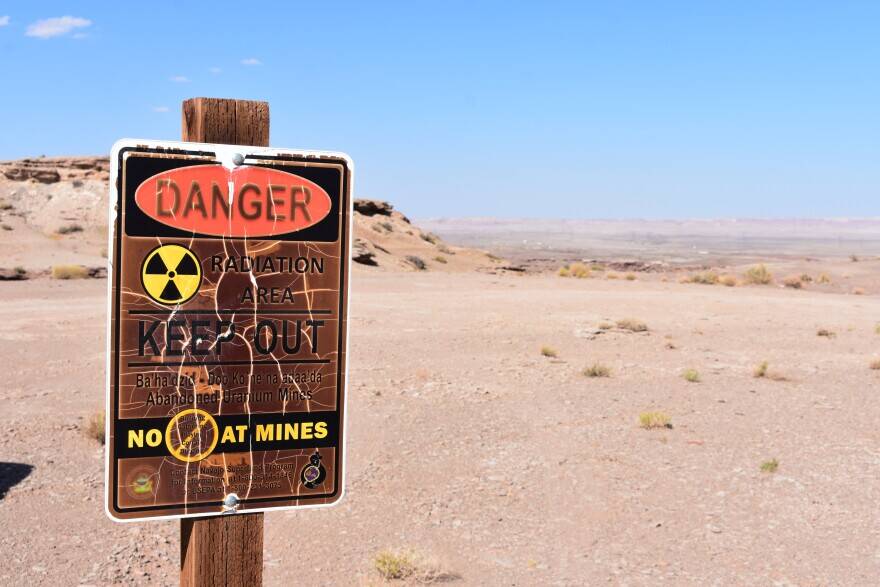Researchers found an impressive ecosystem of "alien" microorganisms in the radioactive Königstein mine in Germany.

NPRA warning sign about the dangerous radioactivity in uranium mines.
In the picturesque Elbe Sandstone Mountains of southeastern Germany, researchers uncovered a thriving ecosystem of “alien” life forms in seemingly one of the most inhospitable environments known to man: an abandoned uranium mine.
The Königstein uranium mine dates back to the 1960s, a period when nuclear energy was still in its infancy and world powers were rapidly looking to harness its capabilities.
After a small pocket of uranium was found in the region, it suddenly blossomed into a major hub for uranium mining. From its founding in the 1960s to its closing in the 1990s, the mine produced over 1,000 tons of uranium annually.
In the 1990s, the mine’s output declined, and officials decided to flood it to alleviate any major environmental impacts. After this, it closed for good.
Decades after the mine’s closing, keepers of the mine noticed strange life forms beginning to take root inside its flooded walls. The keepers decided to call in scientists to investigate the matter, and what they found revealed the incredible tenacity of life on Earth.

Zirnstein et al/MicrobiologyOpenResearchers found brown and white slime communities and orange acidic “streamers” reminiscent of worms in the mine.
In the dark and damp mine, researchers identified several microbes. Orange acidic microbes that resemble long, thin worms hung from the walls. Slimy brown and white microbes oozed from the ceilings like stalactites.
Researchers also noted the complexity of the organisms. Most of them were not single-cell bacteria, but multi-celled eukaryotes, or organisms with a nucleus in their cells. According to Big Think, the largest of these microorganisms measured 50 micrometers wide and 200 micrometers long.
Given the complexity of life in the mine, researchers were curious how such an impressive ecosystem could survive in an environment devoid of sunlight and as acidic as grapefruit juice.
According to the published findings on the “alien” microbes, the mine’s low pH, high sulfate concentrations, and elevated concentrations of heavy metals has allowed the microbes to thrive.
Many of the organisms are acid-loving bacteria, meaning they generate energy by feeding off the mine’s abundant reserves of iron and sulfur. These bacteria form the slimy stalactite structures that hang off the mine’s walls.
Then, the tiny eukaryotes feed off the acid-loving bacteria. In turn, the eukaryotes are consumed by other, larger organisms. This process continues, forming a highly efficient and organized food chain.
Researchers were particularly interested in the microorganisms’ structured food chain.
“Eukaryotes colonize to a greater extent extreme habitats as originally thought and are not only present but may play a substantial role in the cycling of carbon within acid mine drainage communities,” they wrote in 2012 study.
The Königstein mine is not the only inhospitable place researchers have found advanced life forms. In 2007, scientists studying Chernobyl’s reactor four found several strains of fungus that appeared to be feeding off the site’s radioactivity.
Even in the deepest depths of the Arctic Ocean surrounded by a large field of hydrothermal vents that are low in oxygen and high in pressure, scientists have found bacteria thriving.
It would seem that no matter how “uninhabitable,” life will always find a way.
After reading about the microorganisms in the German uranium mine, take a look at the dogs of Chernobyl and how they are still thriving in one of the world’s most radioactive areas. Then, read the true story of David Hahn, the “Radioactive Boy Scout” who tried to build a nuclear reactor in his backyard.





